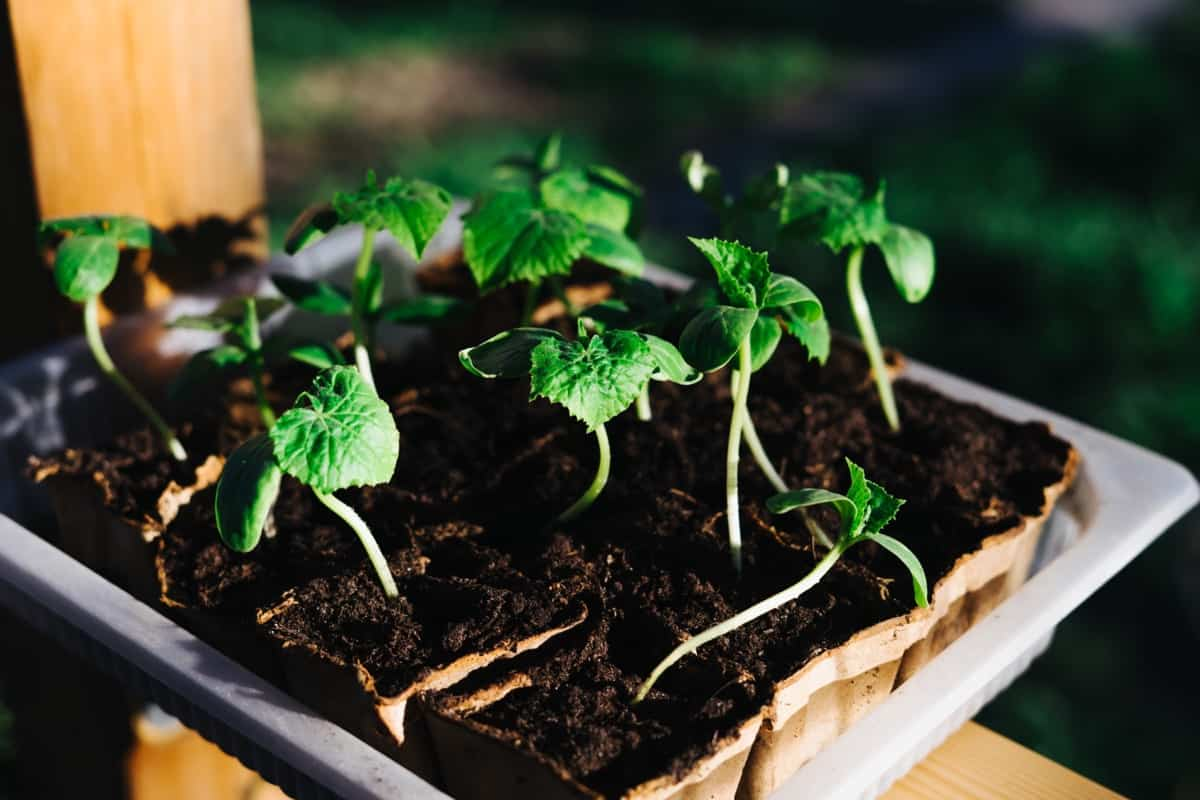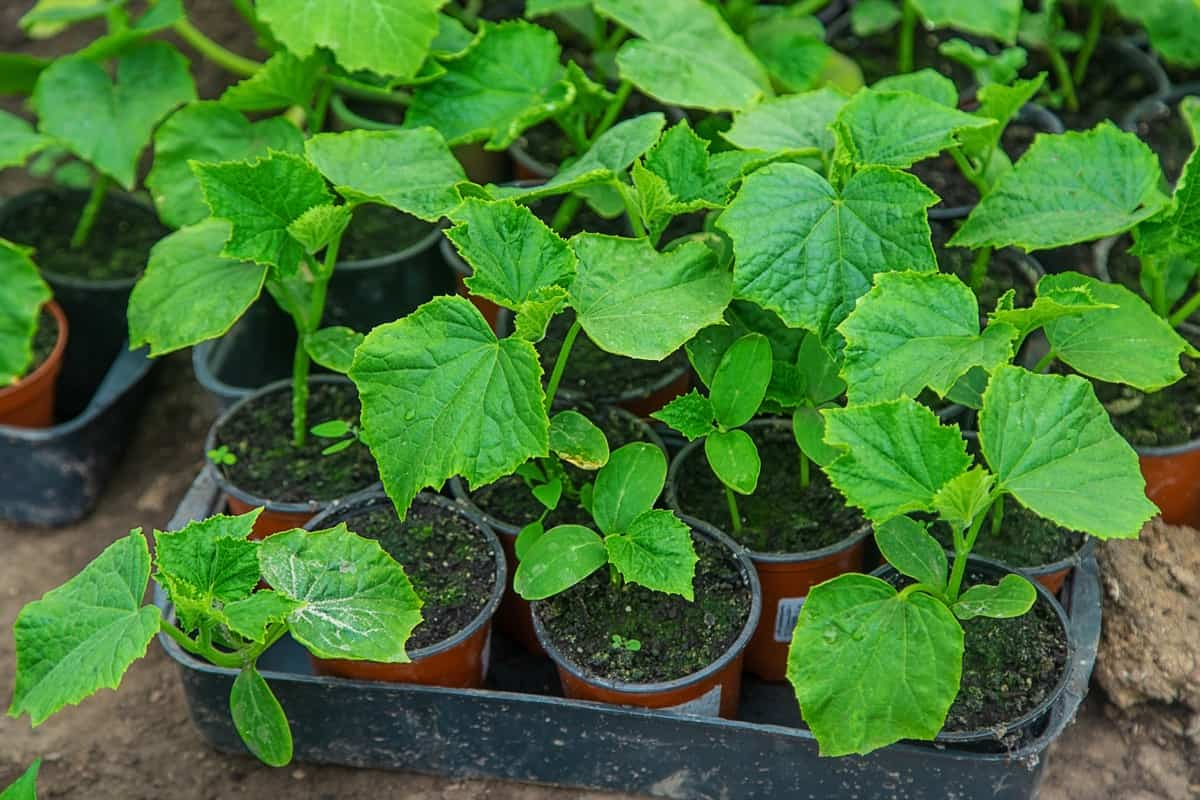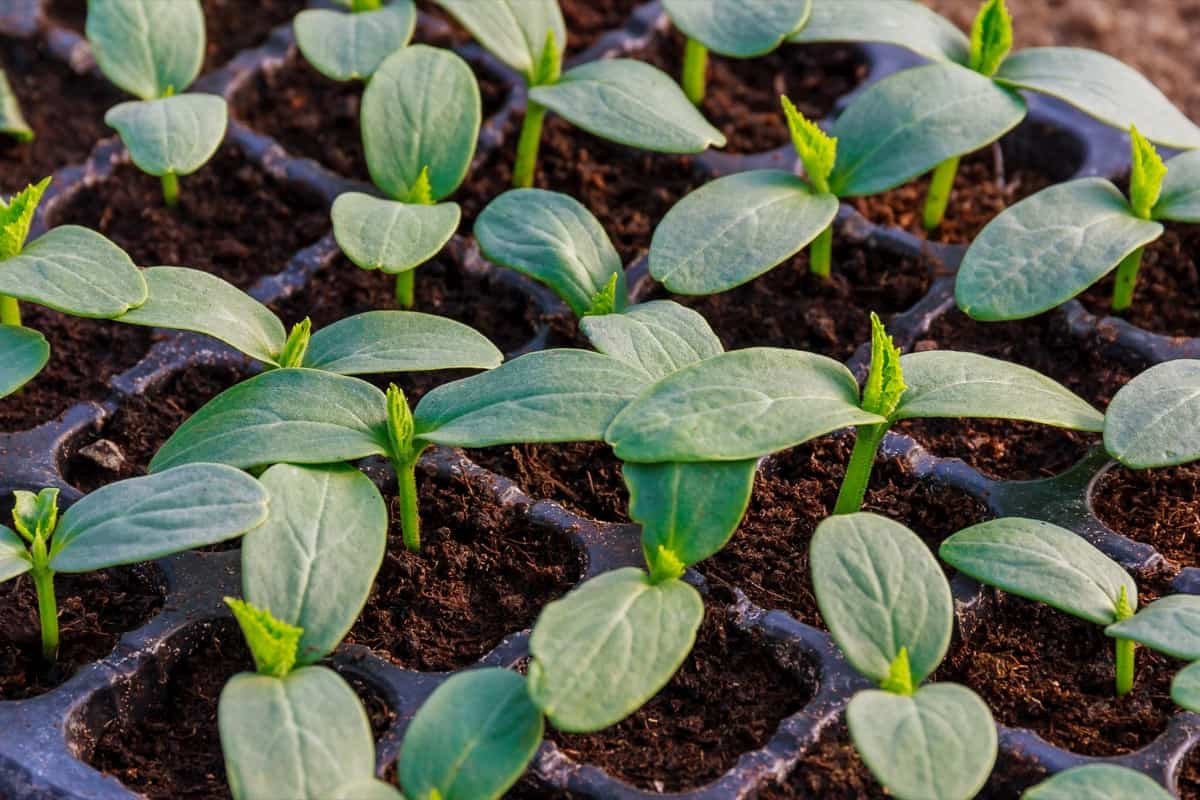Transplanting cucumber seedlings is a crucial step in the gardening process. It ensures the seedlings have enough space to grow and thrive, resulting in healthy and productive cucumber plants. However, timing is essential when it comes to transplanting cucumber seedlings. In this article, we will discuss nine important things to check before you start growing to ensure the successful transplantation of your cucumber seedlings.

Ideal Time to Transplant Cucumber Seedlings
- When to Plant Cucumber Seedlings: Cucumber seeds should be planted directly in your garden after your last frost, once the soil reaches 21-30°C.
- When to Thin Cucumber Seedlings: Thin your cucumber seedlings when they reach 4 inches tall.
- Cucumber Transplant Temperature: Cucumbers grow best with warm soil and air temperatures. The optimal temperature range for seeding and transplanting is 21-30°C. This is typically one to two weeks after the last spring frost. It is the ideal time to transplant cucumber seedlings indoors.
When to Transplant Cucumber Seedlings?
Getting the timing of cucumber seedling transplanting right makes a big difference in the season’s success. Three weeks after germination and after the last frost is the best time to transplant cucumber seedlings. The seedlings should have two sets of leaves by then: two cotyledon leaves that develop from the seed and two true leaves that indicate strong root systems.
Transplanting Cucumber Seedlings: What to Consider
Consider whether you’ve sufficiently hardened off the cucumber seedlings before transplant. Also, determine if the cucumbers received too much or too little water. Whether you use an artificial grow light or the good old-fashioned sun, ensure your cucumber seedlings get between six and eight hours of light daily. Although they can grow with only four or five hours a day, you’re more likely to see stunted or slowed growth. When Transplanting cucumber seedlings into pots and gardens, follow the important factors.
- Choose pots that are spacious enough to accommodate the root system of the cucumber seedlings. Ideally, a pot with a diameter of at least 12 inches and a depth of 12 inches should be used.
- The cucumber transplant temperature should be 21-30°C.
- Proper drainage is important for the health of cucumber seedlings.
- Cucumber plants thrive in full sunlight, so select a location for the pots where they can receive at least 6-8 hours of direct sunlight each day.
- Underwatering causes Cucumber transplant shock. If you don’t water your cucumber plants enough after transplant, they will experience transplant shock.
- How deep to plant cucumber seedlings? Planting cucumber seedlings at a 2.5 to 5 cm depth is generally recommended.
In case you missed it: How to Pollinate Cucumbers by Hand: Natural Pollination Methods, and Tips

Signs That Cucumber Seedlings Are Ready for Transplant
As Signs that cucumber seedlings are ready for transplant indoors, your cucumber seedling should have two fully developed true leaves. In this instance, it shows that the seedling’s root system is healthy and will survive the transplant shock and brief exposure to the outside air. The ideal time to transplant cucumber seedlings from a seed tray is typically cucumber seedlings are ready for transplanting when they have developed two to three true leaves.
When to transplant cucumber seedlings outside? A cucumber seedling should be transplanted three weeks after germination, after the last frost, or when the soil temperature reaches 21°C consistently at night. Ensure the cucumber seedlings are hardened off by exposing them to sunlight a week before transplanting.
How to Determine if Cucumber Seedlings Are Mature Enough for Transplant
The first step in determining if cucumber seedlings are ready for transplant is to assess their leaf development. Mature cucumber seedlings should have at least 3 to 4 fully developed leaves. These leaves should be well-expanded and have a dark green color. Carefully lift the seedling out of its container and examine the roots. Mature seedlings should have a well-established root system with several long, white roots branching out from the main stem.
Factors to Check Before Transplanting Cucumber Seedlings
- Soil Condition: Before transplanting cucumber seedlings, it is essential to assess the soil condition. Cucumbers thrive in well-draining soil with a pH level between 6 and 7.
- Temperature: Cucumbers are warm-season plants that require a temperature range of 21°C to 30°C for optimal growth. Before transplanting, check the weather forecast to ensure temperatures are within this range.
- Frost Danger: Cucumber seedlings are highly susceptible to frost damage. Assessing the risk of frost in your region before transplanting is crucial. Cucumbers should only be transplanted after the last frost date has passed.
Watering and Irrigation For Cucumber Seedlings
Watering is crucial for the success of transplanted cucumber seedlings. Ensure the soil is moist before transplanting, and water the seedlings immediately after transplanting. How much water do cucumbers need? Keep the soil moist consistently with one inch of water per week (if temperatures sizzle and rain is scarce, more water should be given). An inadequate or inconsistent moisture supply can result in oddly shaped fruit or poor taste. Water the cucumber plants with a soaker hose or drip irrigation and keep the foliage dry if possible.
In case you missed it: How to Treat White Powder on Cucumber Leaves: Causes, Organic Solutions, and Homemade Remedies

Preparing Cucumber Seedlings for Transplantation
- Harden off the Seedlings: About a week before transplanting, gradually expose the cucumber seedlings to outdoor conditions. Start by placing them outside for a few hours each day and gradually increase the duration over the week. This process will help the seedlings adapt to the changes in temperature and sunlight.
- Choose the Right Time: Wait until the danger of frost has passed before transplanting cucumber seedlings. Cucumbers are warm-season crops that thrive between 21°C and 35°C.
- Prepare the Soil: Before transplanting, prepare the soil in the garden bed. Add organic matter, such as compost or well-aged manure, to improve the soil’s fertility and structure.
- Dig the Holes: Dig holes in the garden bed that is slightly larger than the root ball of the cucumber seedlings. Space the holes about 12 to 18 inches apart to allow the plants enough room to grow.
- Transplant the Seedlings: Gently remove the cucumber seedlings from their containers, taking care not to damage their delicate roots. Place each seedling into a prepared hole, ensuring the root ball is at the same level as the surrounding soil. Firmly press the soil around the seedling to secure it in place.
Common Mistakes When Transplanting Cucumber Seedlings
Transplanting too Early: Transplanting too early can lead to shock and poor growth. It is recommended to wait until the seedlings have at least two to three true leaves before transplanting.
Neglecting to Harden Off: Many gardeners overlook this step and directly transplant seedlings from indoor conditions to the garden. This can result in transplant shock and stunted growth. To avoid this mistake, gradually expose the seedlings to outdoor conditions over a week before transplanting.
Improper Planting Depth: Cucumber seedlings at the wrong depth can hinder their growth and development. Seedlings should be planted at the same depth as in their initial containers. Planting them too deep can cause stem rot while planting them too shallow can lead to weak root development.
In case you missed it: How to Grow Cucumbers from Seeds in Pots/containers: Planting and Care

Conclusion
To ensure their successful growth, transplanting cucumber seedlings requires careful consideration of several factors. Following these guidelines will increase the chances of a fruitful cucumber harvest and enjoy the flavors of homegrown cucumbers. Happy gardening!
- Feed Your Flock for Less: Top 10 Tips to Save on Chicken Feed
- Ultimate Guide to Ossabaw Island Hog: Breeding, Raising, Diet, and Care
- Hatching Answers: The Top 10 Reasons Your Chickens Aren’t Laying Eggs
- Eggs and Economics: Breaking Down the Cost of Raising Backyard Chickens
- Defend Your Greens: Proven Methods to Keep Iguanas Out of Your Garden
- Ultimate Guide to Cinnamon Queen Chicken: A Comprehensive Guide for Beginners
- Ultimate Guide to California Tan Chicken: Breeding, Raising, Diet, Egg-Production and Care
- Ultimate Guide to Marsh Daisy Chicken: Breeding, Raising, Diet, and Care
- 10 Types of Chicken Farming Businesses You Can Start for Profits